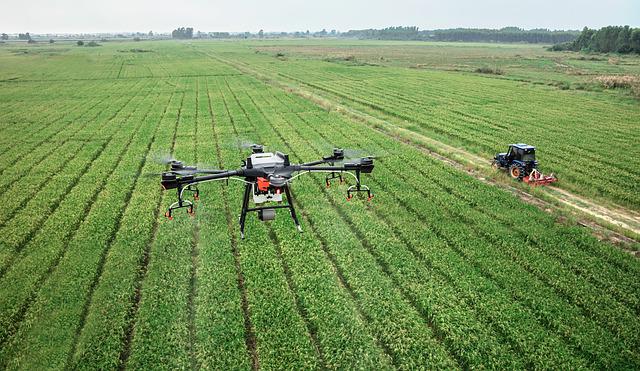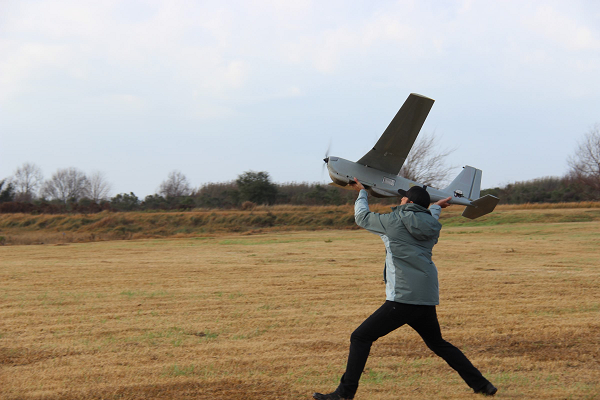
Understanding some key issues surrounding industrial drones will help you understand how they will be used in the future. We'll discuss Regulations, Sensors, Applications, and the Future. We'll also discuss the challenges associated with their development. This article aims to provide an overview of these issues and to discuss how industry ecosystems can help the industry grow. These drones could change the way we live and work. They can save lives, improve productivity, and reduce costs.
Applications
With its wide range of capabilities, industrial drones have a wide range of uses, including disaster relief, construction, and inspection. You can also equip your drone with sensors such as lidar, laser and ultrasonic distance sensor. The time-offlight and chemical sensors are just a few examples of other sensors. Multispectral sensors capture data at both visible and invisible wavelengths. Visual sensors are capable of capturing still images and video. Thermal sensors can be used to monitor hot spots or to monitor security threats.
Drones can also be used to aid in operations, saving both time and money. This technology can remove humans from potentially dangerous situations, help to direct traffic, measure pollution levels, or conduct other tasks. These drones have many potential applications, and they are only getting more. They are used mostly for dangerous or filthy tasks, but they also have a place to be used in entertainment and marketing. Commercial drones may be used to lift banners or perform light shows.
Sensors
Industrial drones are now capable of flying above worksite to collect data. The sensors on the drones are capable of measuring ambient conditions as well as chemical compositions. They are also capable of inspecting structures and infrastructures like bridges, pipelines and power generation plants. Multiple sensors can be mounted to the drone's sensor pod. For greater control, the drone can be controlled remotely by a pilot or remotely. Sensors are useful data and help the drone achieve its goals.

Multispectral sensors are especially beneficial for forestry, because they have a spectral response that allows them to differentiate between bushes and trees. A hyperspectral sensor can offer up to 200 spectral band per pixel. These sensors can also collect more data than ever before, reaching terabytes per flight. Multispectral scans are typically performed using a push-broom or whisk-broom technique.
Regulations
Companies that use industrial drones need to comply with regulations. The National Business Aviation Association, (NBAA), has produced a guide that drone operators can follow. This guide includes key findings from the trials conducted by the CAAC. The regulations for drones should include weight, risk classes, and management systems. These guidelines address foreign drone operators. However, the guidelines must be implemented by companies, not by the FAA.
To reduce regulatory burden regulators should tailor regulations to each type of operation. Many drone operations are carried out in unpopulated airspace, where there is little other aircraft, population, and property. Operations like crop monitoring may not require the same safety regulations that drones used for agricultural purposes. Operators must also show that they have enough experience and are willing invest in the technology. While regulations regarding industrial drones should be flexible they should not inhibit the growth of America's commercial drone industry.
Future
Industrial drones are becoming more popular in all areas, including construction and agriculture. They are already used for disaster relief and pesticide spraying. They are also used in construction, power line inspection and academic research. Future industrial drones will be used to inspect powerlines as well as assess the quality of land. There are many uses for industrial drones. Read on to find out more about these exciting technologies.

In the near future, drones in industrial applications could reduce costs and increase efficiency for businesses. They are cost-effective and efficient, and can also improve accuracy and customer services. They could even help solve security issues on a global scale. Drone technology has grown from a fad to a major trend, and more businesses have realized the potential of using these aerial robots. These drones already have a proven track record and will only continue to improve productivity.
FAQ
With a drone, can someone spy on me?
A drone can be used to spy on anyone. Protecting yourself from drones requires that you be alert to them and stay away from areas where they fly. Notify 911 immediately if you find a drone in your vicinity.
Do I need any special training to fly drones?
No, you don't need special training to fly your drone. You just need a remote-control unit and basic knowledge in flight mechanics.
Can you fly a drone high without a licence?
The FAA has no limits on the maximum height a drone can fly. You will need to register your unmanned aircraft system (UAS), including the registration number and model name, weight, dimensions, serial number, manufacturer's number, date manufactured, and any other information.
Does the FAA regulate drones?
The FAA oversees all aspects regarding drone operations, including safety standards and certification requirements.
Which drone is the best?
The DJI Phantom 2 Vision+ beginner drone is very popular today. This drone comes with a 4K camera which can be used to take aerial photos and videos. You can easily navigate this drone using its built-in GPS system.
Statistics
- Research and Markets predict a growth rate of 51.1% over the next five years. (thedroneu.com)
- According to industry research from ZipRecruiter , there are 10 cities where the typical salary for a Drone Pilot job is above the national average. (dronesgator.com)
- According to the multiple listing service (MLS), houses and apartments with drone photographs are up to 68 percent more likely to sell than those without pictures. (thedroneu.com)
External Links
How To
What is a Battery Pack? How do I replace it?
Your drone's main power source is the battery pack. They provide enough power to keep your quadcopter flying smoothly and safely.
The difference in the battery pack between a drone you already own and a new one that you purchase will not be noticeable. But, over time, your battery pack will slowly become worn down. The battery pack may eventually stop working. To ensure your drone continues to operate properly, you'll have to replace its battery pack.
It is best to replace a battery pack with the original part. You could endanger your drone's safety by using a faulty replacement part.
Follow these steps to replace a battery.
-
Disconnecting the battery connector cable is a good idea. This step ensures that your drone doesn't receive any electrical current. You can simply remove the battery connector cable from your drone to disconnect it.
-
Unscrew the battery. Unscrew the battery pack from the bottom of your quadcopter. The battery pack often splits into two pieces.
-
Locate the battery contacts. After you have removed the battery pack from the drone, locate the contacts. These tiny metal pins are what connect the battery to other components within the drone.
-
Next, attach the new battery. Next, you will need to install the battery into the drone. Align the connectors for the battery pack on each side. After that, attach the battery pack to the drone. Once you have done that, tighten the bolts that hold your battery pack in its place.
-
Connect the battery connector cable again. After installing the new battery pack, reconnect the battery connector cable to the drone.
-
Make sure to test the drone. Make sure your drone is still working properly before you take it out again. Congratulations!